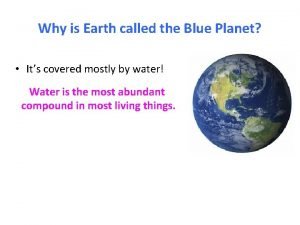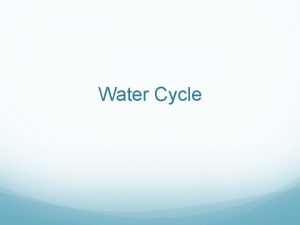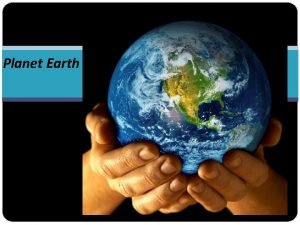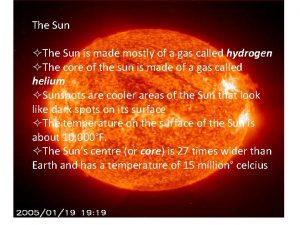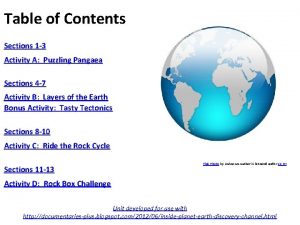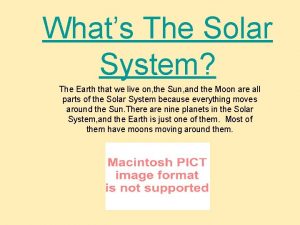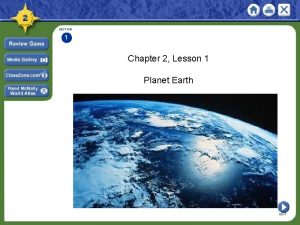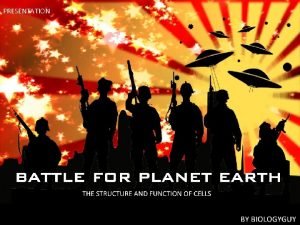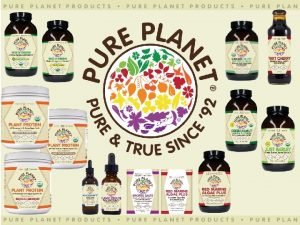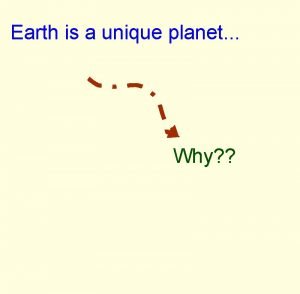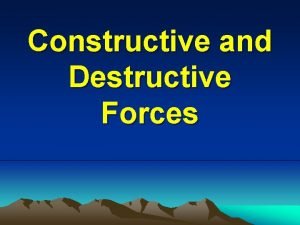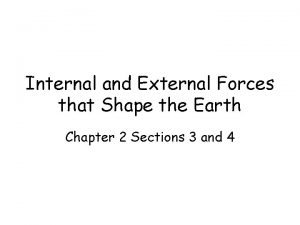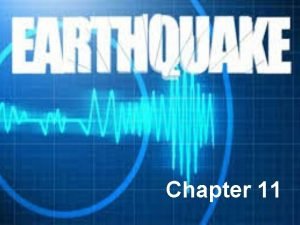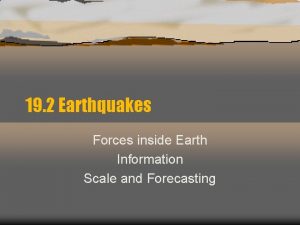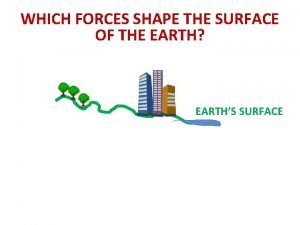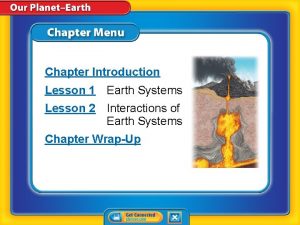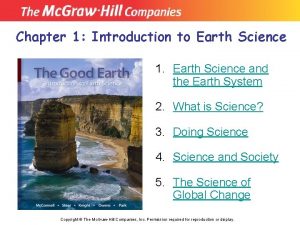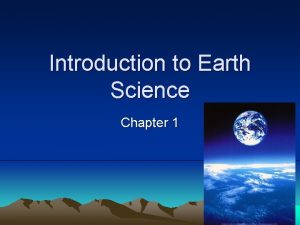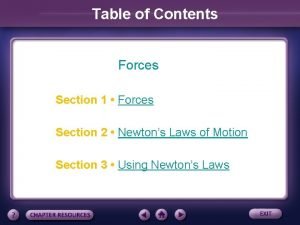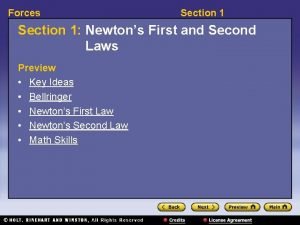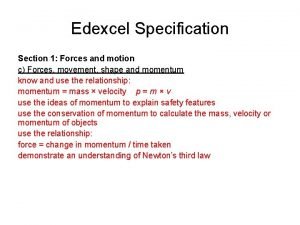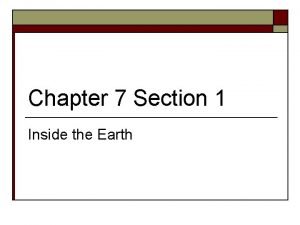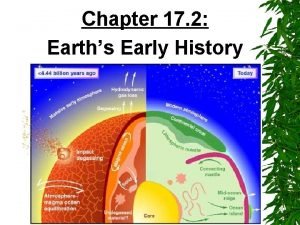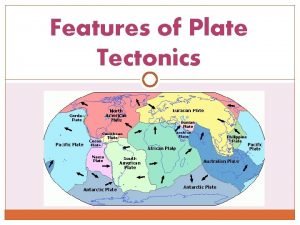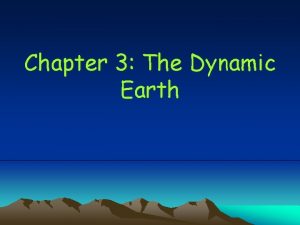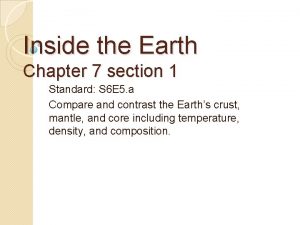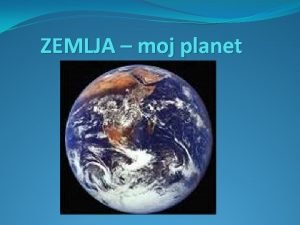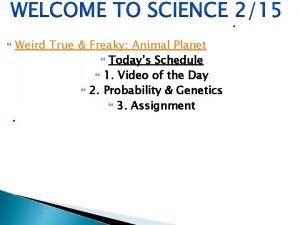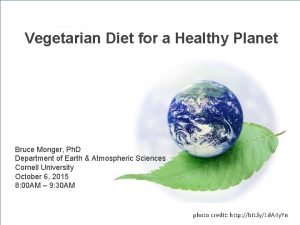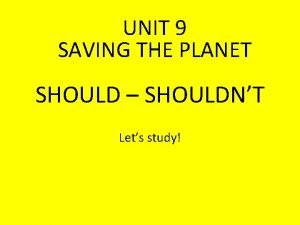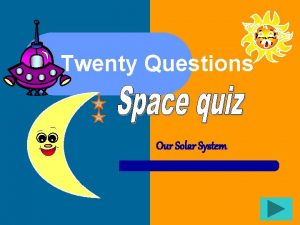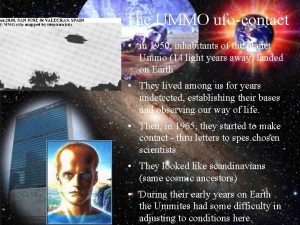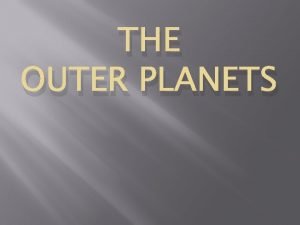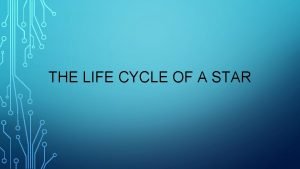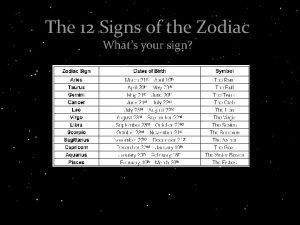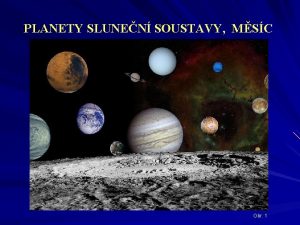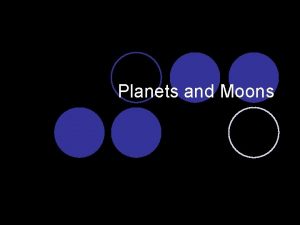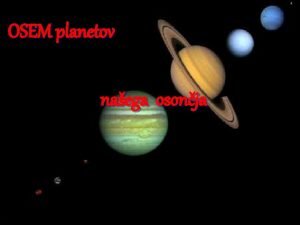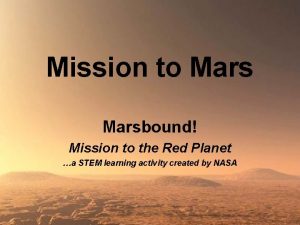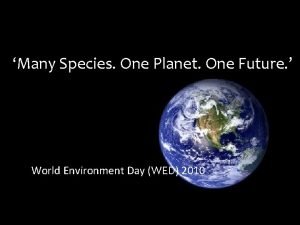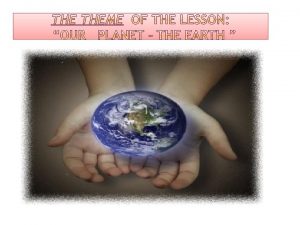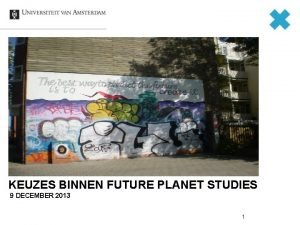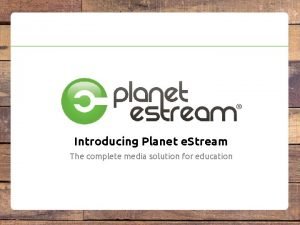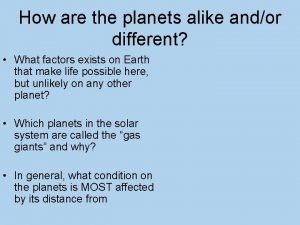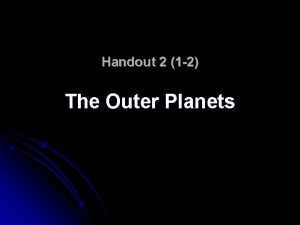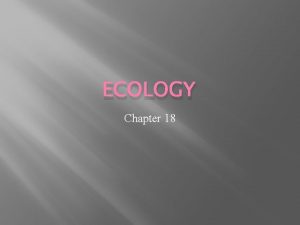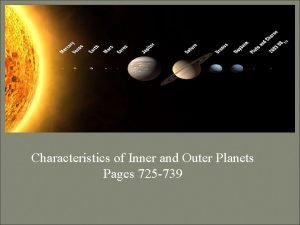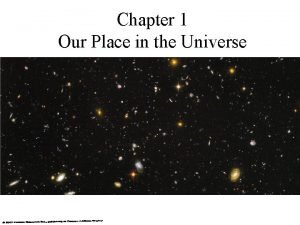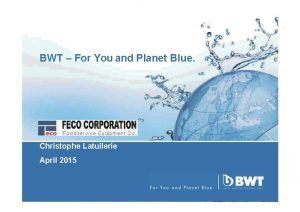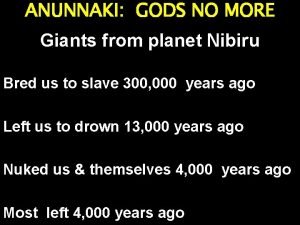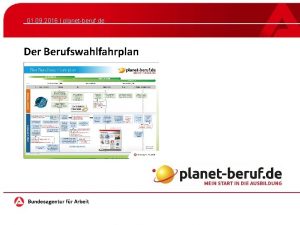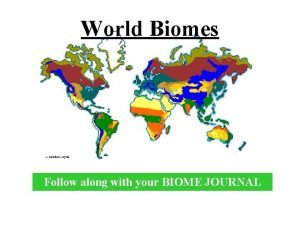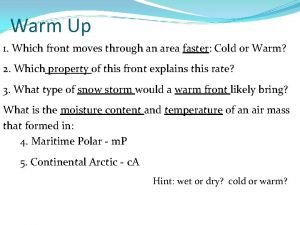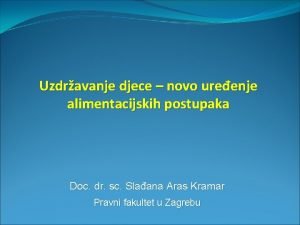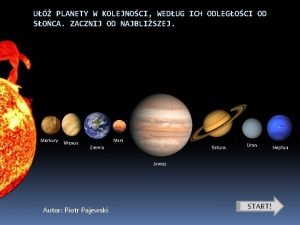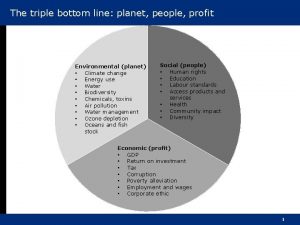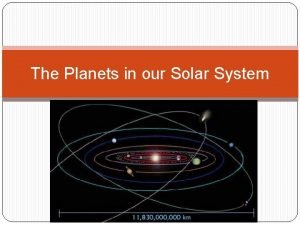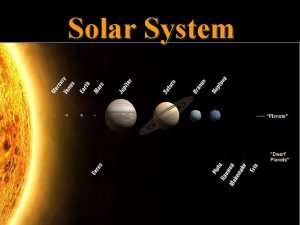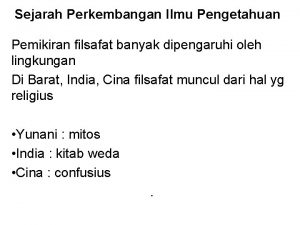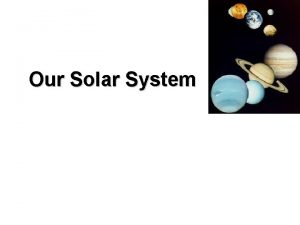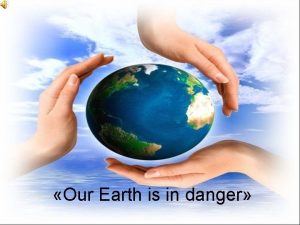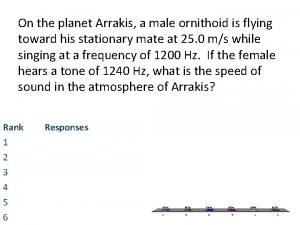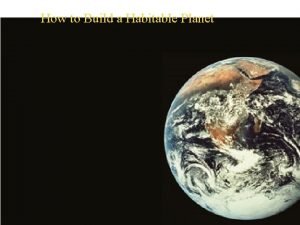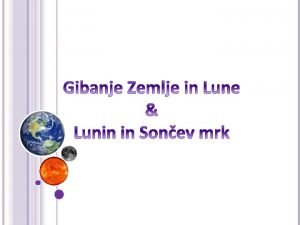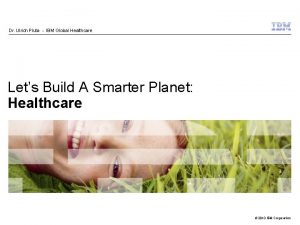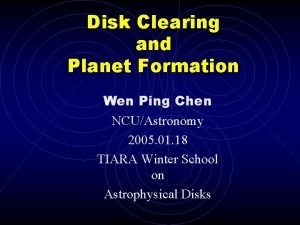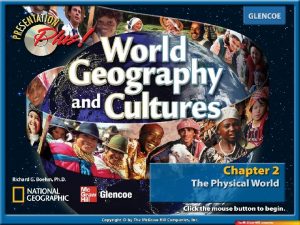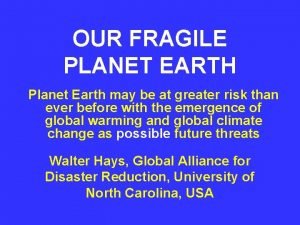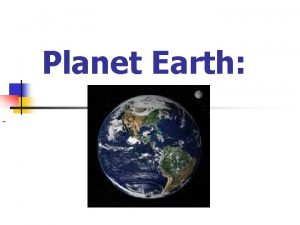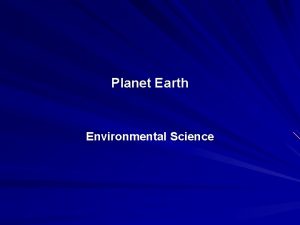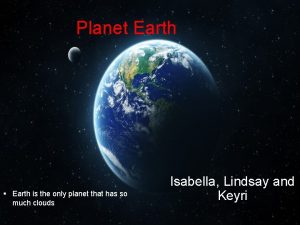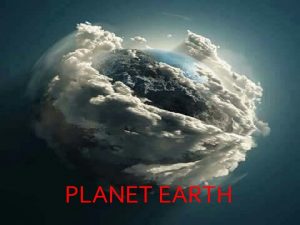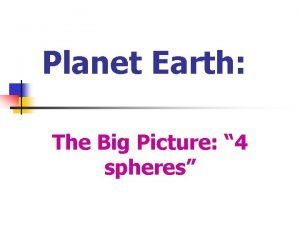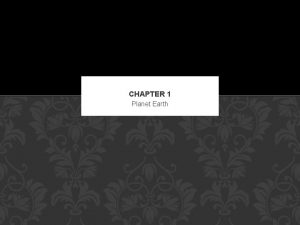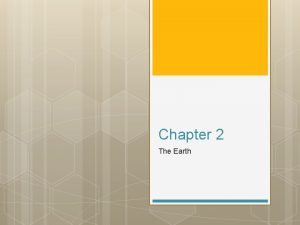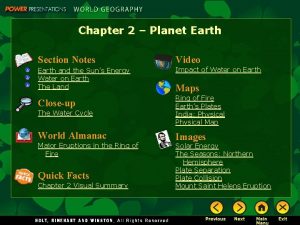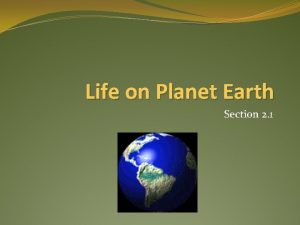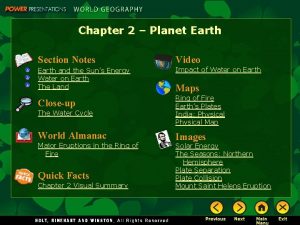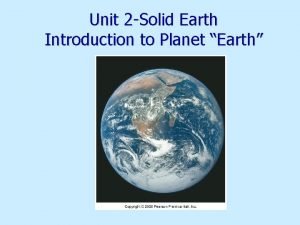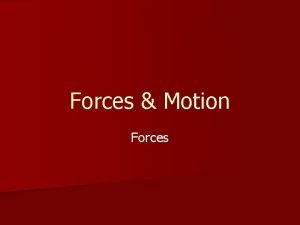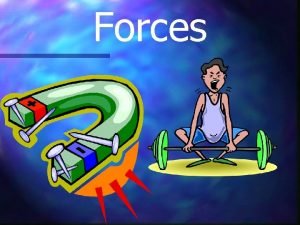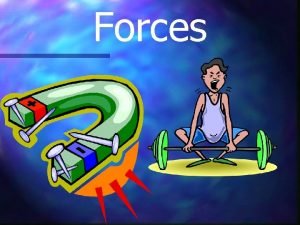Introduction Section 1 Planet Earth Section 2 Forces







































































































- Slides: 103


Introduction Section 1: Planet Earth Section 2: Forces of Change Section 3: Earth’s Water Visual Summary

Understanding that Earth is part of a larger physical system called the solar system helps us understand how life on our planet is possible. Earth’s physical systems—air, landforms, and water—are affected by natural forces such as earthquakes and volcanoes that can influence human activities on the planet.

Section 1: Planet Earth Physical processes shape Earth’s surface. As part of a larger system called the solar system, Earth has water, land, and air that make the planet suitable for plant and animal life.

Section 2: Forces of Change Physical processes shape Earth’s surface. The surface of the Earth has been shaped by the internal forces of tectonic activity, as well as by the external forces of weathering and erosion.

Section 3: Earth’s Water Physical processes shape Earth’s surface. The water cycle keeps the amount of water on Earth, both freshwater and salt water, fairly constant.


Planet Earth is part of a larger system called the solar system. Earth has water, land, and air that make it suitable for plant and animal life.

Planet Earth • hydrosphere • continental shelf • lithosphere • atmosphere • biosphere • approach • assistance • features

Planet Earth A. Isthmus of Panama B. Sinai Peninsula C. Mount Everest D. Dead Sea E. Mariana Trench

Planet Earth Which of the following is at the center of our solar system? A. Earth B. Sun C. Mars A. A B. B C. C

Our Solar System Earth is part of a larger physical system that contains other planets, moons, and stars. • At least eight planets exist, and each is in its own orbit around the sun: – Mercury – Venus – Earth – Mars

Our Solar System – Jupiter – Saturn – Uranus – Neptune


Our Solar System (cont. ) • Ceres and Pluto are dwarf planets. • All of the planets are grouped into two types— terrestrial and gas giant planets. • Thousand of smaller objects—including asteroids, comets, and meteoroids—revolve around the sun. The Solar System

Getting to Know Earth’s surface is a complex mix of landforms and water systems. • About 70% of the surface of the Earth is made up of water and is called the hydrosphere. • About 30% of the surface of the Earth is land, including continents and islands. • The air we breathe is part of the Earth’s atmosphere. Water, Land, and Air


Getting to Know Earth (cont. ) • The part of the Earth that supports life is the biosphere. • Landforms – Landforms and bodies of water are the natural features of the Earth’s surface. – Underwater landforms are as diverse as those found on dry land. – Seen from space, Earth’s most visible landforms are the seven continents. Underwater Landforms


Getting to Know Earth (cont. ) • Earth’s Heights and Depths – The highest point on Earth is Mount Everest, which is 29, 035 feet above sea level. – The lowest dry land point is the shore of the Dead Sea, which is 1, 349 feet below sea level. – Earth’s deepest known depression is the Mariana Trench, which is 35, 827 feet deep.


Forces of Change Internal and external forces shape the Earth’s surface.

Forces of Change • core • accretion • mantle • spreading • crust • fold • continental drift • fault • plate tectonics • faulting • magma • weathering • subduction • erosion • glacier • moraine

Forces of Change • releasing • constantly • tension

Forces of Change A. Himalaya B. San Andreas Fault C. Kōbe D. San Francisco E. Ring of Fire F. Greenland G. Antarctica

Earth’s Structure The Earth’s internal and external structure, including the tectonic plates, is responsible for the creation of continents, oceans, and mountain ranges. • The Earth is composed of three main layers: – The core – The mantle – The crust Inside the Earth


Earth’s Structure (cont. ) • Many scientists believe that most of the landmasses forming our present-day continents were once part of one gigantic supercontinent called Pangaea. • Due to continental drift, they slowly separated. • Due to plate tectonics, the physical features of the planet are constantly changing.

Internal Forces of Change Plate tectonics is responsible for folding, lifting, bending, and breaking parts of the Earth’s surface. • Mountains are formed when: – giant continental plates collide – a sea plate collides with a continental plate (called subduction) Continental Drift


Internal Forces of Change (cont. ) • During accretion, continents can grow outward. • If two sea plates converge, an island chain may form. • If spreading occurs, the magma that rises will form undersea volcanic mountains or ridges and some islands. Plate Movement


Internal Forces of Change (cont. ) • Folds and Faults – Moving plates may squeeze the Earth’s surface until it buckles (called folds). – Plates may also grind or slide past each other, creating cracks in the Earth’s crust (called faults). – One famous fault is the San Andreas Fault in California.

Internal Forces of Change (cont. ) • Earthquakes – Sudden, violent movements of tectonic plates along a fault line are known as earthquakes. These shaking activities dramatically change the surface of the land the floor of the ocean. – Earthquakes often occur where plates meet. Tension builds up along fault lines as the plates stick – The Ring of Fire is one of the most earthquake -prone areas on the planet.

Internal Forces of Change (cont. ) • Volcanic Eruptions – Volcanoes are mountains formed by lava or by magma that breaks through the Earth’s crust. – Volcanoes often rise along plate boundaries where one plate plunges beneath another, as along the Ring of Fire. In such a process, the rocky plate melts as it dives downward into the hot mantle. Forces of Change


External Forces of Change External forces such as weathering and erosion also shape the surface of the Earth. • The Earth is changed by two basic kinds of weathering: – Physical weathering – occurs when large masses of rock are physically broken down into smaller pieces. – Chemical weathering- changes the chemical makeup of rocks. For example, rain water that contains carbon dioxide from the air easily dissolves certain rocks, such as limestone.

External Forces of Change (cont. ) • Wind Erosion – Wind erosion involves the movement of dust, sand, and soil from one place to another. – Plants help protect the land from wind erosion; however, in dry places where people have cut down trees and plants, winds pick up large amounts of soil and blow it away. – Wind erosion can provide some benefits. The dust carried by wind often forms large deposits of mineral rich soil.

External Forces of Change (cont. ) • Glacial Erosion – As glaciers move, they may destroy forests, carve out valleys, alter courses of rivers, and wear down mountaintops, changing the landscape. – There are two types of glaciers: • Sheet glaciers- flat, broad sheets of ice. Today sheet glaciers cover most of Greenland all of Antarctica. • Mountain glaciers- located in high mountain valleys where the climate is cold, gouge out round U-Shaped valleys as they move downhill

External Forces of Change (cont. ) • Water Erosion – Water erosion begins when springwater and rainwater flow downhill in streams, cutting into the land, and wearing away the soil and rock.

Which external force of change is responsible for the Grand Canyon? A. Weathering B. Erosion A. A B. B


Earth’s Water Earth’s water cycle keeps the amount of water on our planet, both freshwater and salt water, fairly constant.

Earth’s Water • water cycle • desalination • evaporation • groundwater • condensation • aquifer • precipitation • area • focus • source

Earth’s Water A. Pacific Ocean B. Atlantic Ocean C. Indian Ocean D. Arctic Ocean E. Mediterranean Sea F. Gulf of Mexico

Earth’s Water The total amount of water on earth A. Always changes. B. Never changes. C. Sometimes changes. A. A B. B C. C

The Water Cycle The amount of water on Earth remains fairly constant and moves in the water cycle. • The Earth’s water is constantly moving—from the oceans to the air to the land finally back to the ocean.

The Water Cycle (cont. ) • The process involves: – Evaporation – Condensation – Precipitation The Water Cycle

In which part of the water cycle does vapor change back into liquid? A. Evaporation B. Condensation C. Precipitation A. A B. B C. C

Bodies of Salt Water Salt water covers much of the Earth’s surface. • Oceans – About 97% of the Earth’s water is saltwater in the form of oceans, seas, gulfs, and bays.

Bodies of Salt Water (cont. ) • The four oceans are: – The Pacific – The Atlantic – The Indian – The Arctic

Bodies of Salt Water (cont. ) • Salt Water to Freshwater – Today, efforts focus on ways to meet the world’s increasing need for freshwater, such as turning ocean water into freshwater by removing the salt (called desalination). Desalination Through Distillation

Which ocean is the largest? A. Pacific B. Atlantic C. Indian D. Arctic A. B. C. D. A B C D

Bodies of Freshwater Although there is a small amount of freshwater on Earth, it is necessary to sustain life. • Lakes, Streams, and Rivers – Lakes, streams, and rivers contain less than 1% of the Earth’s freshwater.

Bodies of Freshwater (cont. ) • Groundwater – About 0. 5% of the Earth’s freshwater is found beneath the surface also called groundwater. – Wells and springs tap into groundwater and are important sources of freshwater for people. – The majority of Earth’s freshwater is used in agriculture.

How much of the Earth’s total water supply is freshwater? A. 1% B. 2% C. 3% D. 4% A. B. C. D. A B C D


Planet Earth • Earth is the third planet from the sun in our solar system. It is one of 4 planets with a solid, rocky crust, and the only planet with liquid water on its surface. • Earth’s proximity to the sun allows for liquid water on the surface needed to sustain life. • Earth also has an atmosphere that protects life from the harmful effects of the sun and keeps the Earth at a temperature suitable for a variety of life forms.

Forces of Change • The Earth is shaped by internal and external forces. • Inside the Earth is a superheated, solid inner core. A liquid outer core is covered by the hot rock of the mantle. • The Earth’s crust, made up of more than a dozen slabs, rests on a melted layer of mantle. These slabs move around the globe, creating physical features. • Wind and water erosion shape the surface of the Earth.

Earth’s Water • The water cycle keeps Earth’s water constantly moving—water evaporates from oceans, lakes and streams. Then it cools, becomes condensation, and falls to Earth as precipitation. • Most of Earth’s water is found in the oceans. The rest is frozen in glaciers, found underground, or in lakes, rivers and streams. • Because most of Earth’s water is salty ocean water, people have found a way to remove the salt from water. Desalination is expensive, but useful in places where freshwater is scarce.














hydrosphere the watery areas of the earth, including oceans, lakes, rivers, and other bodies of water

lithosphere surface land areas of the earth’s crust, including continents and ocean basins

atmosphere a layer of gases that surrounds the Earth

biosphere the part of the Earth where life exists

continental shelf the part of a continent that extends underwater

core the innermost layer of the Earth. Made up of a super-hot but solid inner core and a liquid outer core

mantle thick middle layer of the Earth’s interior structure, consisting of dense, hot rock

crust the rocky shell forming the Earth’s surface

continental drift theory that the continents were once joined and then slowly drifted apart

plate tectonics the term scientists use to describe the activities of continental drift and magma flow which create many of Earth’s physical features

magma molten rock that is pushed up from the Earth’s mantle

subduction a process by which mountains can form as sea plates dive beneath continental plates

accretion a slow process in which a sea plate slides under a continental plate, creating debris that can cause continents to grow outward

spreading a process by which new land is created when sea plates pull apart and magma wells up between the plates

fold a bend in layers of rock, sometimes caused by plate movement

fault a crack or break in the Earth’s crust

faulting a process of cracking that occurs when folded land cannot be bent any further

weathering chemical or physical processes, such as freezing, that break down rocks

erosion wearing away of the Earth’s surface by wind, flowing water, or glaciers

glacier large body of ice that moves across the surface of the earth

moraine piles of rocky debris left by melting glaciers

water cycle regular movement of water from ocean to air to ground and back to the ocean

evaporation process of converting into vapor

condensation the process of excess water vapor changing into liquid water when warm air cools

precipitation moisture that falls to the earth as rain, sleet, hail, or snow

desalination the removal of salt from seawater to make it usable for drinking and farming

groundwater within the Earth that supplies wells and springs

aquifer underground water-bearing layers of porous rock, sand, or gravel

To navigate within this Presentation Plus! product: Click the Forward button to go to the next slide. Click the Previous button to return to the previous slide. Click the Return button to return to the main presentation. Click the Home button to return to the Chapter Menu. Click the Help button to access this screen. Click the Exit button or press the Escape key [Esc] to end the chapter slide show. Links to Maps in Motion, static maps and charts, and transparencies appear near the bottom of slides as they are relevant. Links to the Reference Atlas and Geography Online are located on the navigation bar of most screens.

This slide is intentionally blank.
 Why is earth called the blue planet?
Why is earth called the blue planet? On a warm sunny day water in a glass
On a warm sunny day water in a glass The planet earth we live
The planet earth we live The sun is made mostly of
The sun is made mostly of Tasty tectonics answer key
Tasty tectonics answer key Whats the biggest planet in the solar system
Whats the biggest planet in the solar system Lesson 1 planet earth
Lesson 1 planet earth Battle for planet earth
Battle for planet earth Relationship of the sun to the earth grade 7
Relationship of the sun to the earth grade 7 Pure planet sports salts
Pure planet sports salts Why is the earth called unique planet
Why is the earth called unique planet Like parallel force
Like parallel force The forces shown above are
The forces shown above are Intramolecular vs intermolecular bonds
Intramolecular vs intermolecular bonds Intermolecular forces ranked
Intermolecular forces ranked Covalent bond intermolecular forces
Covalent bond intermolecular forces Force and motion
Force and motion Unbalanced force
Unbalanced force Constructive and destructive forces examples
Constructive and destructive forces examples Constructive force example
Constructive force example External forces of the earth
External forces of the earth Forces inside earth
Forces inside earth Forces inside earth
Forces inside earth External forces that shape the earth
External forces that shape the earth Lesson 1: introduction to the earth
Lesson 1: introduction to the earth Chapter 1 introduction to earth science
Chapter 1 introduction to earth science Introduction to earth science
Introduction to earth science Section 3 using newtons laws
Section 3 using newtons laws Chapter 11 section 3 motion and force answer key
Chapter 11 section 3 motion and force answer key Math skills newton's second law
Math skills newton's second law Is momentum a force
Is momentum a force Section 17-2 earth's early history
Section 17-2 earth's early history In what section of earth do earthquakes happen?
In what section of earth do earthquakes happen? Chapter 7 section 1 inside the earth answer key
Chapter 7 section 1 inside the earth answer key Three compositional layers of the earth
Three compositional layers of the earth Section 17-2 earth's early history
Section 17-2 earth's early history Earth cross section diagram
Earth cross section diagram Chapter 3 the dynamic earth section 1 the geosphere
Chapter 3 the dynamic earth section 1 the geosphere Composition of the earth's crust
Composition of the earth's crust Moj planet zemlja
Moj planet zemlja Weird true and freaky animal planet
Weird true and freaky animal planet Bruce monger
Bruce monger Unit 9 saving the planet
Unit 9 saving the planet What's the hottest planet
What's the hottest planet Planet ummo
Planet ummo Rocky planet surface
Rocky planet surface Outer planets
Outer planets Outer planets
Outer planets 1995 january 23 nasa
1995 january 23 nasa Leo lucky day
Leo lucky day Does uranus have rings
Does uranus have rings Pořadí planet
Pořadí planet Feature of mercury
Feature of mercury Planet fitness internship
Planet fitness internship Happy planet index
Happy planet index What separates the inner planets and outer planets
What separates the inner planets and outer planets Marko repnik
Marko repnik Marsbound mission to the red planet
Marsbound mission to the red planet One futureworld
One futureworld Earth is my home i promise to keep it
Earth is my home i promise to keep it Future planet studies
Future planet studies Planet e stream
Planet e stream Ibm smarter planet case study
Ibm smarter planet case study Hungry planet what the world eats
Hungry planet what the world eats How are the inner planets alike
How are the inner planets alike Hiphop planet
Hiphop planet Eighth planet from the sun
Eighth planet from the sun Studying our living planet
Studying our living planet Planet.com.tw
Planet.com.tw Characteristics of the planets
Characteristics of the planets Sit on the planet chapter 1
Sit on the planet chapter 1 For you and planet blue
For you and planet blue Nibiru tiamat
Nibiru tiamat Planet ata
Planet ata Planet beruf de
Planet beruf de Taiga plant adaptations examples
Taiga plant adaptations examples Planet mesh
Planet mesh Planet usb wifi adapter driver
Planet usb wifi adapter driver Taco planet menu
Taco planet menu Raging planet hurricane worksheet answer key
Raging planet hurricane worksheet answer key Planet ro.comeo
Planet ro.comeo Kolejność planet
Kolejność planet People- planet- profit-benadering (triple p-benadering)
People- planet- profit-benadering (triple p-benadering) How to remember the planets
How to remember the planets A famous swashbuckling trio of old
A famous swashbuckling trio of old Erde besonderheiten
Erde besonderheiten Solar system in circle
Solar system in circle Pemikiran filsafat al kindi
Pemikiran filsafat al kindi Whats the second smallest planet
Whats the second smallest planet Our planet is in danger
Our planet is in danger On the planet arrakis a male
On the planet arrakis a male Elinor fuchs visit to a small planet
Elinor fuchs visit to a small planet Planet pbx
Planet pbx What's the coolest toy on planet zeist and why
What's the coolest toy on planet zeist and why How to build a habitable planet
How to build a habitable planet Majhen planet ki kroži okoli sonca
Majhen planet ki kroži okoli sonca Math planet
Math planet 3 p's mvo
3 p's mvo Ulrich pluta
Ulrich pluta Cost of planet fitness membership
Cost of planet fitness membership Planet wen
Planet wen Planet digital tv
Planet digital tv Dana cooperson
Dana cooperson Planet com tw
Planet com tw
